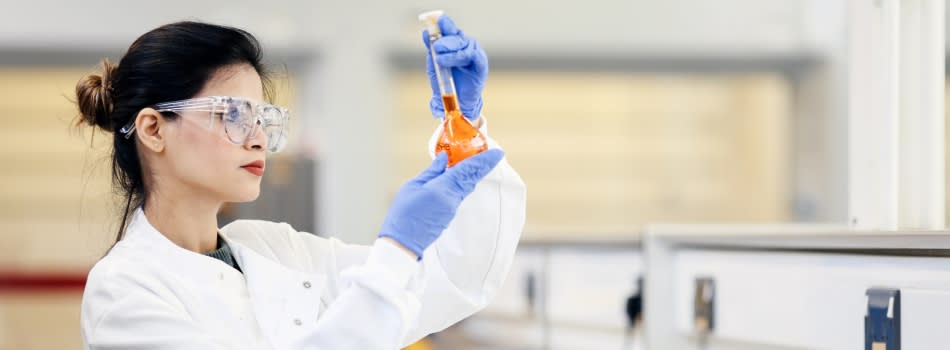Dr Simon Scott, Dr N Temperton, Dr M Reeves
Applications accepted all year round
Self-Funded PhD Students Only
About the Project
Human cytomegalovirus (HCMV) establishes lifelong infections of the host with >60% infected across the globe. In healthy children and adults HCMV produces mild symptoms like influenza or mononucleosis. However, the immunocompromised (notably organ and stem cell transplant patients) can suffer from serious disease, affecting the GI tract, respiratory system (i.e. pneumonia), central nervous system and even lead to death. HCMV is also the leading viral cause of congenital disease. Furthermore, the ability of HCMV to establish lifelong infections means that individuals are also at risk from reactivation later in life providing another source of morbidity.
To date, no HCMV vaccine is licensed and thus treatment relies on antiviral drugs which, whilst effective, are also toxic. This toxicity precludes their use in vulnerable patient groups and thus HCMV remains the highest priority for vaccine development.
Individuals infected with HCMV make a large immune response. Cell-mediated immunity is known to play a protective role against CMV infection. Furthermore, there is strong evidence that humoral immunity is important, including neutralising antibodies against viral proteins required for viral entry. These responses are likely to be important for future vaccines and also provide the basis for biological therapeutics, such as monoclonal antibodies. However, methods to measure antibody neutralisation for large serum panels have proved problematic, due to the time taken for cell cytopathic effect (‘plaques’) to appear, reliance on identifying viral gene expression by microscopy or secondary immunostaining and therefore a generally high level technical skills. Thus there is a demand for the development of simpler novel systems to measure and study these important immunological responses.
HCMV is a large, complex virus, and although some progress has been made in unravelling the various mechanisms of cell entry and neutralizing immune responses, there are many questions still unanswered. The contribution of numerous surface envelope glycoproteins to these processes needs further investigation.
Pseudotyped viruses (also known as pseudotype particles) provide a useful and amenable tool to conduct the above studies. The Viral Pseudotype Unit has developed expertise in the generation of such the safe, surrogate viruses. These particles have the external antigens of the study virus in their envelope and a core (e.g. a lentivirus) containing a reporter gene for rapid assay readout. Pseudotypes can be readily manipulated to display particular combinations of envelope proteins (a difficult task in complex native viruses), enabling the dissection of roles and responses to specific proteins. To date we have generated pseudotype-based tests for many pathogenic RNA viruses (e.g. Influenza, Ebola, SARS-CoV-2), and recently for more complex DNA viruses such as alpha herpesviruses. We now wish to build on this success by focusing on HCMV (a beta herpesvirus) in a collaboration with the Institute for Immunity & Transplantation at University College London.
The project will be based at the Viral Pseudotype Unit at Medway School of Pharmacy, but is also likely to involve visits to Dr Reeves laboratory at UCL.
Project Aims:
• Generate HCMV-pseudotyped lentivirus particles exhibiting different arrays of surface glycoproteins
• Conduct cellular entry studies on tropism to identify the impact of specific envelope proteins on the process
• Investigation of neutralising antibody responses in patient sera from natural infection and vaccine studies
• Testing of potential therapeutic monoclonal antibodies and viral entry inhibitors
• HCMV pseudotyped virus stability studies (for future transport and storage)
Through these aims we will establish model systems for studying aspects of viral entry which will, concomitantly, allow the development of rapid high throughput assays to measure and dissect immunological responses against an important human pathogen.
Entry requirements:
Applicants should have or expect to obtain a first or upper second class honours degree (or equivalent) in an appropriate subject and a Masters (at Merit or above) in Pharmaceutical Science or closely related subject.
How to Apply:
To apply please go to https://msp.ac.uk/postgraduate/?course_id=785&course_level=postgraduate
You will need to apply through the online application form on the main University website. Please note that you will be expected to provide personal details, education and employment history and supporting documentation (curriculum vitae, transcript of results, two academic
We welcome applications from people with disabilities and Black, Asian and Minority Ethnic (BAME) backgrounds.
Funding Notes
This project is a self-funded opportunity available to both Home/EU and International students.
Applicant must have access to funding to cover tuition fees, living costs and any related project costs (i.e. bench fees).
References
Temperton N., Wright E. & Scott S.D. (2015). Retroviral pseudotypes – From Scientific tools to clinical utility. Encyclopedia of Life Sciences. DOI: 10.1002/9780470015902.a0021549.pub2
Kinsley R., Pronost S., DE Bock M., Temperton N., Daly J.M., Paillot R. & Scott S.D. (2020). Evaluation of a pseudotyped virus neutralisation test for the measurement of equine influenza virus-neutralising antibody responses induced by vaccination and infection. Vaccines 8(466). DOI:10.3390/vaccines8030466
Griffiths P., Baraniak I. & Reeves M. (2015) The pathogenesis of human cytomegalovirus. J. Pathol. 235(2): 288-97. DOI: 10.1002/path.4437
Nelson C.S., Baraniak I., Lilleri D., Reeves M.B., Griffiths P.D. & Permar S.R. (2020) Immune correlates of protection against human cytomegalovirus acquisition, replication and disease. J. Inf. Dis. 221: S45-59. DOI: 10.1093/infdis/jiz428

 Continue with Facebook
Continue with Facebook




